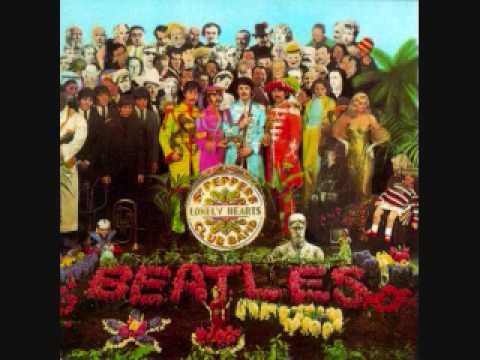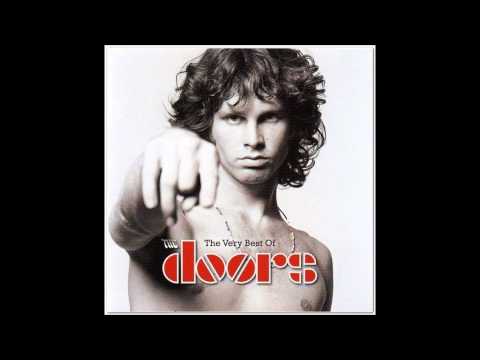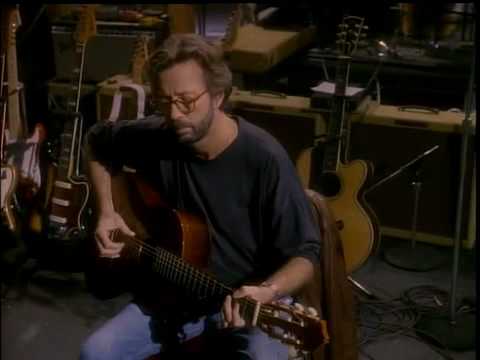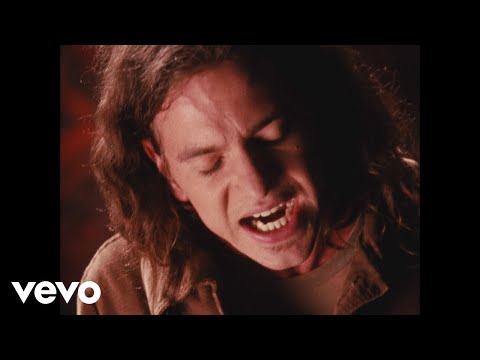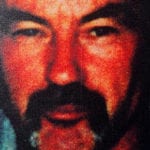10 ‘A Day In The Life’By The Beatles
The Beatles are like pizza—everyone is familiar with them, and almost everyone likes them. From their clean-cut, kitsch-pop early days, singing about holding hands and twisting and shouting, to their acid-fueled later days, during which they recorded some of the most critically acclaimed music of all time, the Beatles have a little something for every taste. No strangers to a vast expanse of themes in their music, the Beatles’ 1967 song “A Day in the Life” was inspired, in part, by a tragic car accident. In Hunter Davies’s The Beatles—the band’s only authorized biography—John Lennon explains that the song’s first verse, which starts, “I read the news today, oh boy / About a lucky man who made the grade,” was about the death of Tara Brown, a London socialite, heir to the Guinness beer fortune and friend of the Beatles. Brown was driving his sports car at high speeds when he allegedly failed to see a stoplight change—inspiring the line “He didn’t notice that the lights had changed”—and collided with a parked truck. He died from his injuries the next day. “I didn’t copy the accident,” Davies quotes Lennon as saying. “Tara didn’t blow his mind out. But it was in my mind when I was writing that verse.” Nevertheless, the song remains an eerie ode to an untimely death.
9 ‘Peace Frog’By The Doors
The Doors fused blues, jazz, and pure rock ‘n’ roll underneath the booming, crooner-derived voice of their Lizard King front man Jim Morrison, becoming one of the greatest rock bands of all time. Morrison, a singer-songwriter, filmmaker, and poet, often spoke of his interest in Native American culture, which was expressed in much of his work—1970’s “Peace Frog” being no exception. Although Morrison starts nearly every line of this punching, three-minute tune with the word “blood,” it’s a brief moment of spoken word poetry that best lets the song’s meaning shine through. “Indians scattered on dawn’s highway, bleeding / Ghosts crowd the young child’s fragile, eggshell mind,” Morrison says, in a solemn tone. As the story goes, these lines of intense imagery were inspired by a car accident that Morrison and his family had driven past on an Indian reservation when he was just four years old. Morrison would go on to reference the incident many times in his life, describing the scene gruesomely, as he does in “Peace Frog.” However, in No One Here Gets Out Alive, Jerry Hopkins’s and Danny Sugermen’s biography of the late singer, Morrison’s father is quoted as saying the scene of the accident was far tamer than the macabre picture Jim painted time and again in poems, songs, and interviews. Whatever the truth may be, the accident did impact Morrison greatly, and he considered it to be the most formative incident of his life.
8 In The Aeroplane Over The SeaBy Neutral Milk Hotel
As Freaks and Geeks is to the world of television and Clerks is to the world of movies, Neutral Milk Hotel is to the world of music—a cult phenomenon. The southern-bred rockers, led by enigmatic front man Jeff Mangum, made a splash in the indie music scene of the late ‘90s, with their second and most popular album In the Aeroplane Over the Sea. The 1998 album’s relative popularity might surprise you when you consider its 11 tracks were inspired by Anne Frank’s The Diary of a Young Girl. In an interview with Slate, Mangum admitted to having spent several days crying after reading the book and dreaming of going back in time to rescue the young Holocaust victim. Mangum’s whiny voice quivers over the vaguely distorted guitar strumming of the album’s title track, as he sings lines about Frank, such as, “There are lights in the clouds / Anna’s ghost all around / Hear her voice as it’s rolling and ringing through me.”
7 ‘Heartbreak’By The Fray
The youngest band on our list, the Fray, formed in 2002 in Denver. They rose to popularity in 2005 with their radio-friendly “Over My Head (Cable Car),” which became a Top 10 single in the US. Although 2011’s catchy, upbeat “Heartbeat,” with lines like “You gotta love somebody,” appears to be nothing more than a sappy, hooky, love song, its true meaning is far darker. According to the band’s front man Isaac Slade and reports from the Huffington Post, the song is about the infamous Rwandan genocide, which claimed the lives of an estimated 800,000 Rwandans in just 100 days. Slade found the inspiration to write the song while visiting the Rwandan capital Kigali, where he stood on the grave of more than 250,000 of the genocide’s victims. In the song’s chorus Slade sings, “If you can love somebody, love them all the same,” promoting the song’s anti-violence message.
6 ‘Adam’s Song’By Blink-182
Punk-pop rockers Blink-182 have run naked through music video sets and sung silly songs about pay phone prank calls and how it sucks to work for a living. But the southern California trio has a serious side, too, and that side is best expressed in their 2000 hit, “Adam’s Song.” With lines like, “I’m too depressed to go on / You’ll be sorry when I’m gone,” it’s not hard to figure out the inspiration behind this song. According to a 2004 Washington Post article, the song was written after the band received a suicide letter from a fan. Fortunately, the fan survived his attempt at suicide, but in a bitter twist of irony, the song inspired by suicide became a part of it in the spring of 2000. Greg Barnes, a 17-year-old high school student who had witnessed the horrors of the Columbine High School massacre, hanged himself in his garage with “Adam’s Song” playing on a CD. Band member Mark Hoppus would later tell MTV that he was saddened to hear the news of the boy’s suicide, reiterating that the point of the song was about overcoming depression and suicidal thoughts, not giving in to them.
5 ‘Nebraska’By Bruce Springsteen
Like his skinnier, nasally voiced counterpart Bob Dylan, Bruce Springsteen is no stranger to writing poetic lyrics. And, with or without the E Street Band, the Boss has consistently pleased critics. In the title track of his 1982 solo album Nebraska, Springsteen boldly takes on a serial killer’s point of view. “I saw her standin’ on her front lawn just a twirlin’ her baton / Me and her went for a ride, sir . . . and 10 innocent people died,” Springsteen sings. He was channeling the voice of spree-killer Charles Starkweather, who killed 11 people in Nebraska and Wyoming in the late ‘50s. Starkweather committed 10 of the 11 murders with his teenage girlfriend, Caril Ann Fugate, by his side which is why Springsteen alludes to 10 murders—not 11—in the song. Springsteen was inspired to write the song after seeing the 1973 film Badlands, which was loosely based on Starkweather’s killing spree. In the song, the narrator describes the murders, as well as his trial and impending execution, as the real Starkweather was executed by way of the electric chair in 1959.
4 ‘Tears In Heaven’By Eric Clapton
Eric Clapton, the ax-slinger from England—originally of Cream fame—was named Rolling Stone’s second greatest guitarist of all time. This talent bleeds through the speakers in many of his songs, none of which are as emotionally charged as 1992’s “Tears in Heaven.” In the song, Clapton is talking to his son, Conor, who was just four years old when he fell to his death from the 53rd story of a New York City apartment building in 1991. Lines like “Would you know my name / If I saw you in heaven?” and “I must be strong / And carry on / ‘Cause I know I don’t belong / Here in heaven” capture Clapton’s intense sorrow following the accident. He has since said the track served as a vehicle for his grieving. The song peaked at number two on the Billboard Hot 100 singles chart in the US, making it the most popular song on our list.
3 ‘Polly’By Nirvana
Nirvana front man Kurt Cobain was said to have an obsession with all things grotesque. His interest in painting became an outlet for this obsession, as he often incorporated blood, semen, and even fecal matter into his artwork. Although Nirvana’s most popular song, “Smells Like Teen Spirit,” was an alt-pop anthem for teenage angst that was mistakenly inspired by the women’s deodorant brand, other songs by the seminal rock group have a more gruesome backstory—one of those being “Polly.” The 1991 mellow, acoustic song was inspired by a newspaper article Cobain read about a 14-year-old girl who was abducted, raped, and tortured with a blowtorch by convicted serial rapist and kidnapper Gerald Arthur Friend in 1987. Similar to what Springsteen does in “Nebraska,” Cobain takes on the perspective of Friend in writing the song, nearly humanizing him through the lyrics’ casual tone. In Charles R. Cross’s biography of Cobain, Heavier Than Heaven, he compares the song to Truman Capote’s 1966 novel In Cold Blood, which chronicled the brutal 1959 murder of the Clutter family in a way that nearly begged sympathy for the two killers.
2 ‘Sunday Bloody Sunday’By U2
U2 are modern-day rock royalty, if there is such a thing. The Irish foursome has been around since 1976, churning out hit after hit, “Sunday Bloody Sunday” being one of them. Watch this video on YouTube In a 2010 Rolling Stone article, U2 front man Bono reflected on the inspiration for the song: a tragic event that took place in the town of Derry, Ireland on the morning of January 30, 1972. In the midst of “The Troubles,” an ethno-nationalist conflict in Northern Ireland that spanned four decades, members of the British Army opened fired on a group of innocent, unarmed civil rights protesters, killing 14 of them, including seven teenagers. The event became known as “Bloody Sunday” and will forever be incarnated in U2’s 1983 song of the nearly same name. Once you’re familiar with the all-too-real story behind this song, lines like “Bodies strewn across the dead end street,” sung by Bono in his signature howl, are enough to send shivers down your spine.
1 ‘Jeremy’By Pearl Jam
Pearl Jam are the kings of ‘90s grunge rock. Their 1992 song “Jeremy” is haunting and angry, and for good reason. It was written about a 15-year-old boy named Jeremy who shot himself in front of his classmates at a Texas high school in 1991. Pearl Jam front man Eddie Vedder wrote the song after reading about the incident in a newspaper article. As the story goes, the boy left the classroom, returned with a .357 Magnum revolver, walked to the front of the class, put the gun’s barrel into his mouth and pulled the trigger. Vedder would later discuss how moved he was by the story in television interviews. Watch this video on YouTube The recurring line “Jeremy spoke in class today” is a disturbing metaphor that alludes to the fact that Jeremy’s classmates later described him as being “real quiet.” I dare you to look into Vedder’s eyes in the music video for “Jeremy” and not get creeped out. Angelo J. Verzoni recently graduated from Boston University’s College of Communication with a B.S. in Journalism and a Minor in Chemistry. Angelo is a freelance writer with an interest in science, sports, and music journalism.
